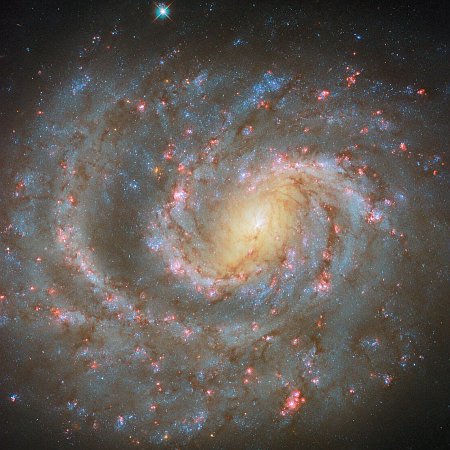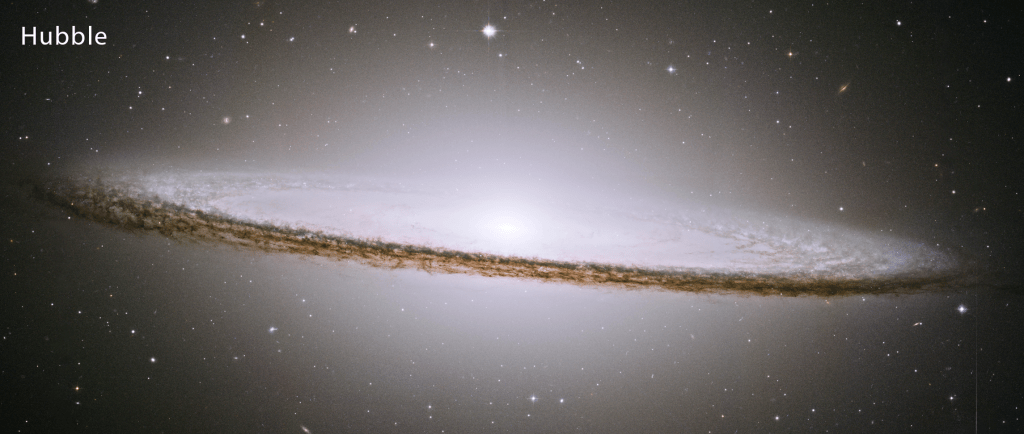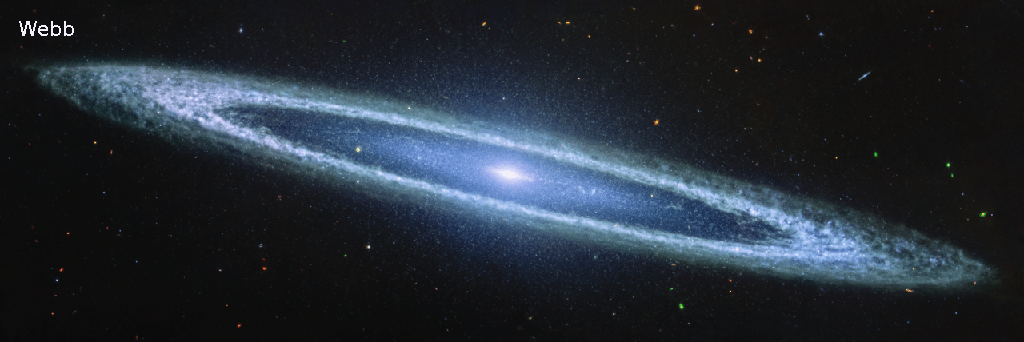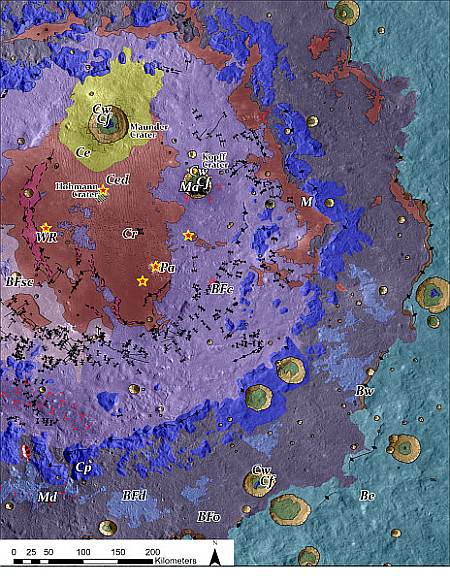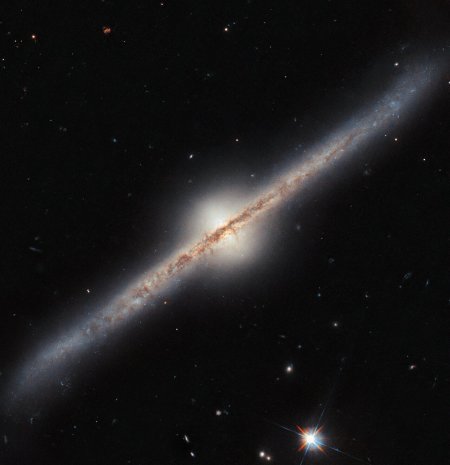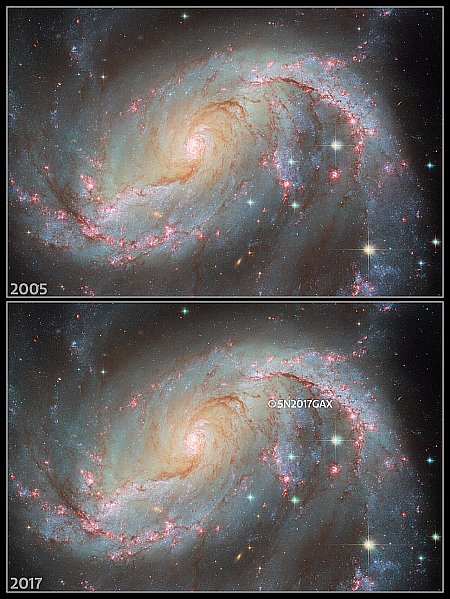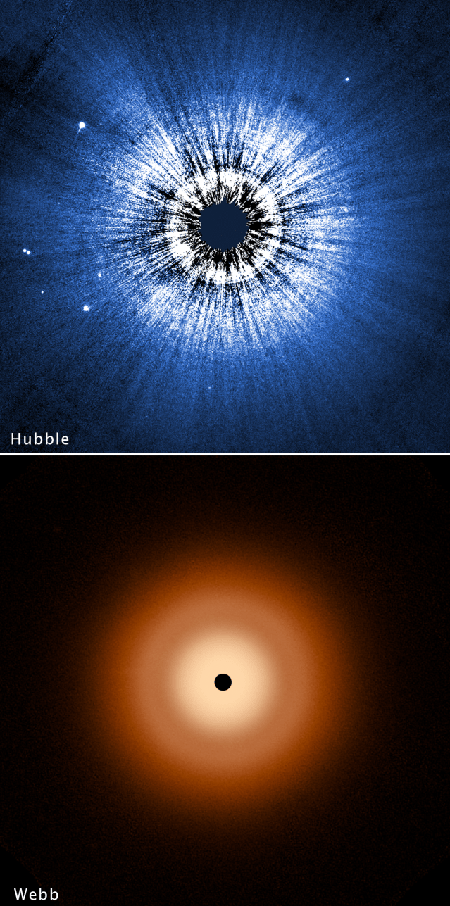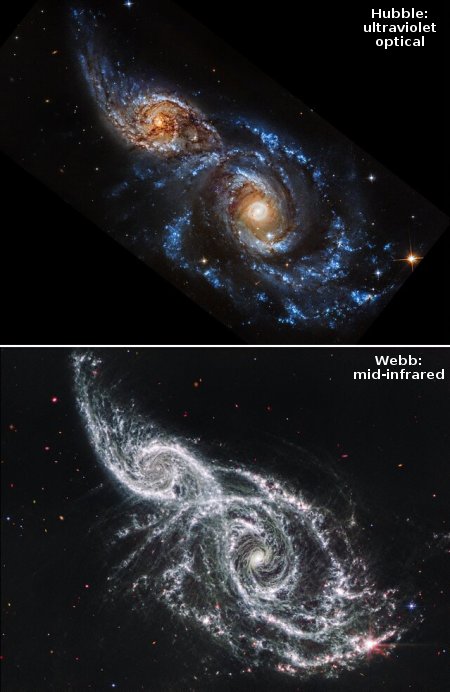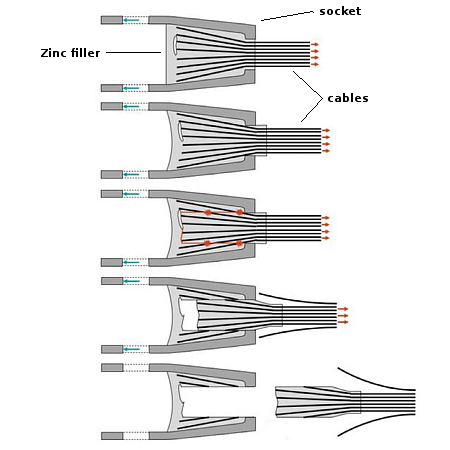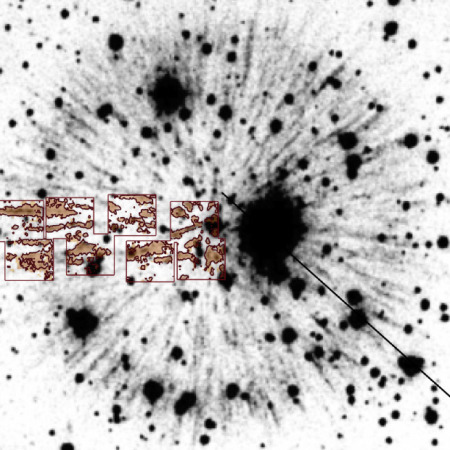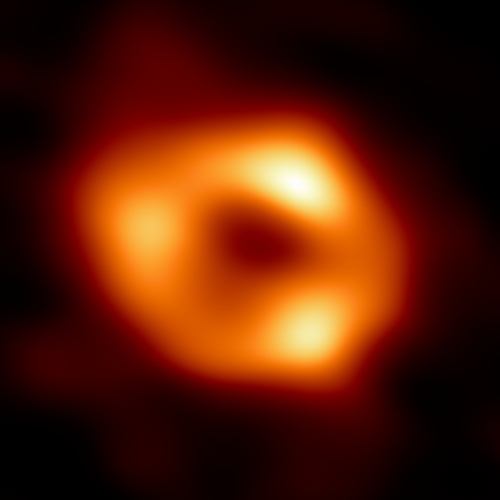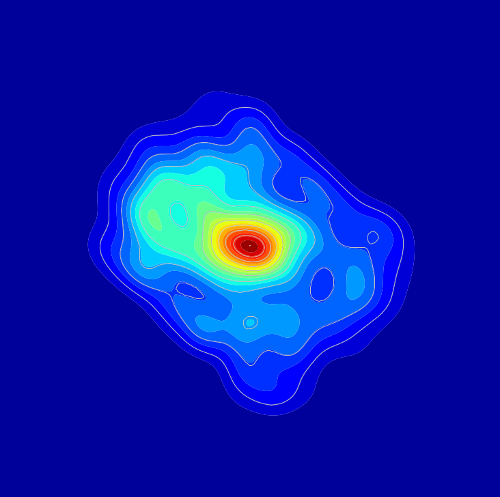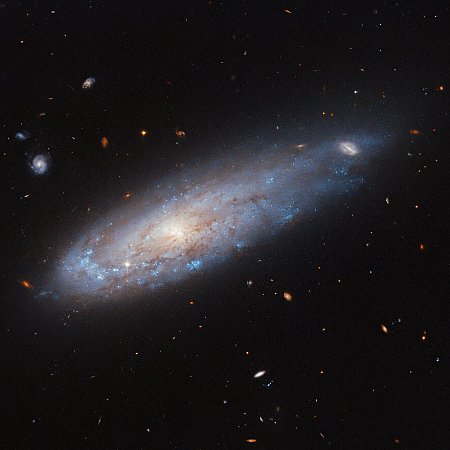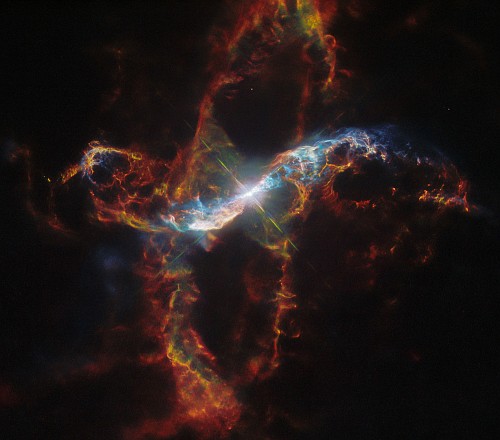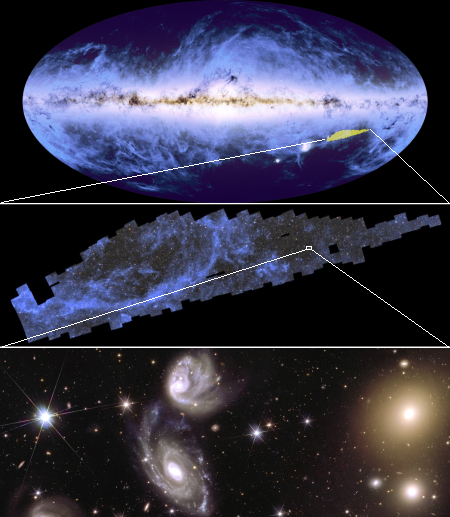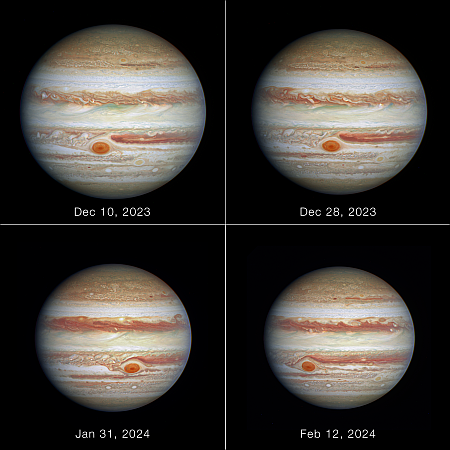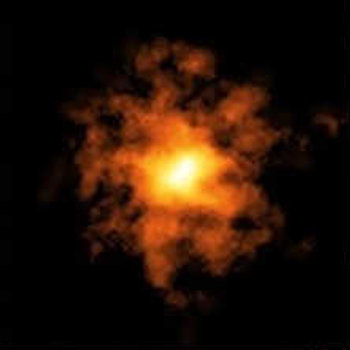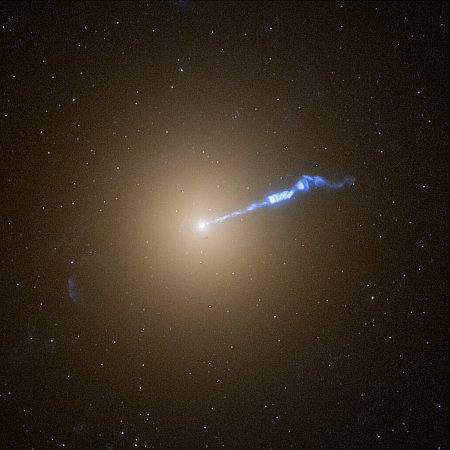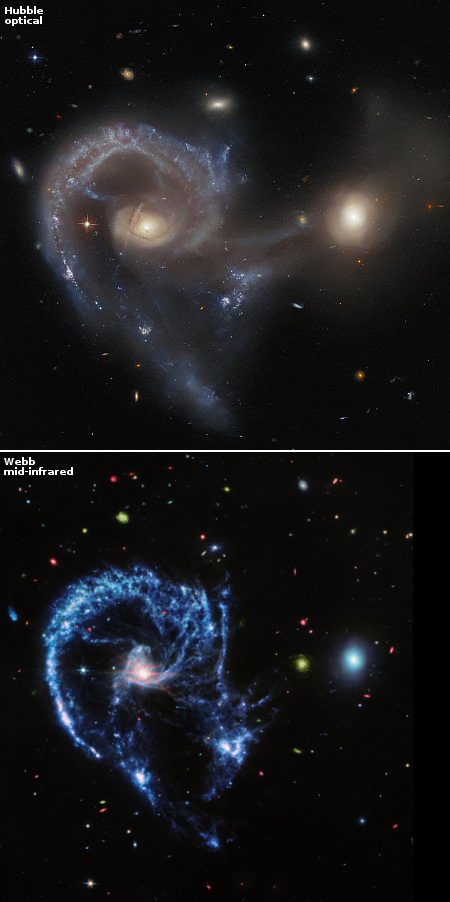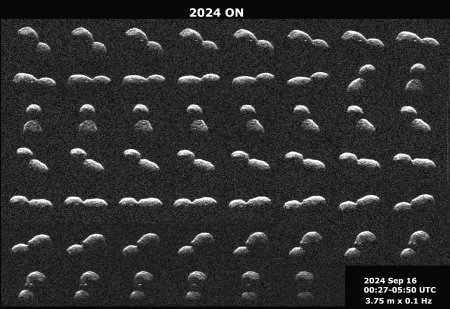Hubble takes a different look at quasar 3C 273
One of the most studied objects in the sky is the quasar 3C 273, located about 2.5 billion light years away and the first quasar ever to be identified, in 1963. What makes it especially interesting is the 300,000-light-year-long jet that shoots out from it.
Astronomers have now used the Hubble Space Telescope to take a different view of 3C 273, using the telescope’s coronograph to block the central bright light so that the surrounding dimmer features can be seen. The two images to the right, reduced and sharpened to post here, show what this new image (bottom) reveals when compared to an earlier Hubble image (top).
The new Hubble views of the environment around the quasar show a lot of “weird things,” according to Bin Ren of the Côte d’Azur Observatory and Université Côte d’Azur in Nice, France. “We’ve got a few blobs of different sizes, and a mysterious L-shaped filamentary structure. This is all within 16,000 light-years of the black hole.”
Some of the objects could be small satellite galaxies falling into the black hole, and so they could offer the materials that will accrete onto the central supermassive black hole, powering the bright lighthouse.
What makes this observation even more outstanding is that the image was produced by using Hubble’s Space Telescope Imaging Spectrograph (STIS) as the coronograph to block the bright center of 3C 273. This improvisation of STIS has been done many times before, but it remains a great example of clever thinking by the astronomers who use Hubble.
One of the most studied objects in the sky is the quasar 3C 273, located about 2.5 billion light years away and the first quasar ever to be identified, in 1963. What makes it especially interesting is the 300,000-light-year-long jet that shoots out from it.
Astronomers have now used the Hubble Space Telescope to take a different view of 3C 273, using the telescope’s coronograph to block the central bright light so that the surrounding dimmer features can be seen. The two images to the right, reduced and sharpened to post here, show what this new image (bottom) reveals when compared to an earlier Hubble image (top).
The new Hubble views of the environment around the quasar show a lot of “weird things,” according to Bin Ren of the Côte d’Azur Observatory and Université Côte d’Azur in Nice, France. “We’ve got a few blobs of different sizes, and a mysterious L-shaped filamentary structure. This is all within 16,000 light-years of the black hole.”
Some of the objects could be small satellite galaxies falling into the black hole, and so they could offer the materials that will accrete onto the central supermassive black hole, powering the bright lighthouse.
What makes this observation even more outstanding is that the image was produced by using Hubble’s Space Telescope Imaging Spectrograph (STIS) as the coronograph to block the bright center of 3C 273. This improvisation of STIS has been done many times before, but it remains a great example of clever thinking by the astronomers who use Hubble.


